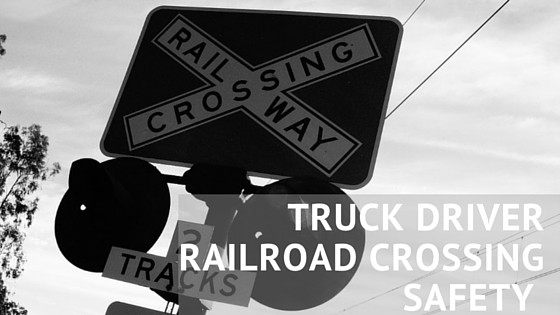With more than 250,000 highway-rail grade crossings in the United States, there is approximately 1 collision with either a vehicle or a pedestrian every 3 hours, leading to 1,000’s being injured and nearly 400 deaths per year. Of those collisions, close to 50% of those occurred while active warning devices were functioning properly. With all that being said, the importance of properly knowing and understanding railroad crossing safety should not be taken lightly.
Know the signs and signals.
There are passive signs and/or active traffic control devices at every railroad crossing. Active traffic control devices are typically not easily missed because there are gates, lights flashing and bells blowing; however, passive signs can be missed or misinterpreted. It is your responsibility to know what the different railroad crossing signs mean and the proper protocol when approaching.
7 Steps for Safety.
As recommended for best practices from the Federal Motor Carrier Safety Administration, when approaching a highway-rail grade crossing, you should use their “7 Steps for Safety” to properly and safely get across tracks:
- Approach with care.
Warn others that you are slowing down. Turn on 4-way flashers. Use pull-out lane if available. - Prepare to stop.
Turn off fans and radio and roll down windows. Locate your cell phone for use in emergency.Stop at least 15 feet, but not more than 50 feet, from nearest rail. - Look and listen both ways, carefully.
Bend forward to see around mirrors and A-pillars. - If it won’t fit, don’t commit.
Do not enter a crossing unless you can drive completely through without stopping!
And, remember, trains are wider than the track. Before you pull onto the track, make sure there is enough room on the other side for the back of your vehicle (and any overhanging cargo) to be at least 3 feet beyond the furthest rail. - Look again.
Before you move, look again in both directions. - Cross tracks with care.
Signal, watch for a safe gap, pull back onto the road if you used a pull-out lane. Use highest gear that will let you cross without shifting. - Keep going once you start, even if lights start to flash or gates come down.
Know the penalties.
There are pretty steep fines and penalties for commercial driver’s who violate the rules when crossing a railway. If you are caught running a gate or not obeying the signs and rules, you could lose your commercial driver’s license. For example, if your undercarriage gets stuck on a hump while crossing, you will be disqualified from driving for 60 days. As the operator of a commercial vehicle, it is your responsibility to know EVERYTHING about that truck and what you can and can’t do.
For information about highway-rail grade crossings, we recommend visiting https://www.fmcsa.dot.gov for up-to-date procedure and protocol so you can be a well-informed professional.
At Roeder Cartage, we take safety seriously and regularly train our drivers to be at the top of their game. If you’re interested in working for our team, check out our careers page today.
Sources: https://www.fmcsa.dot.gov

